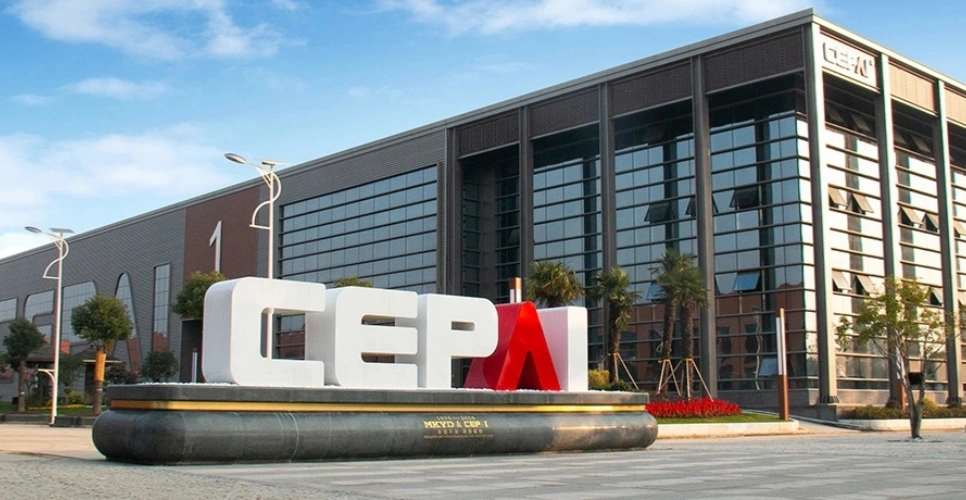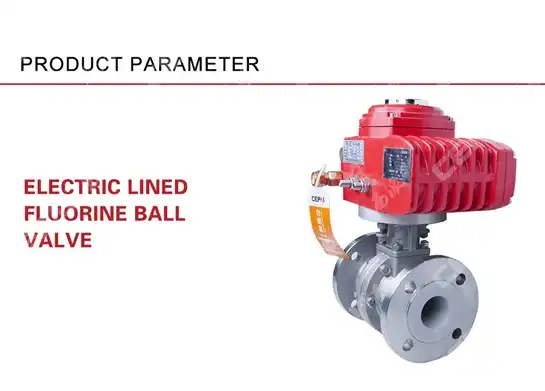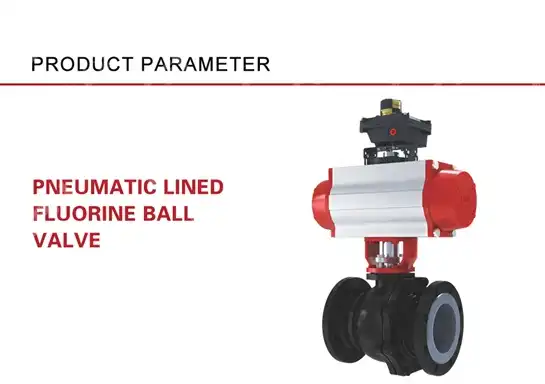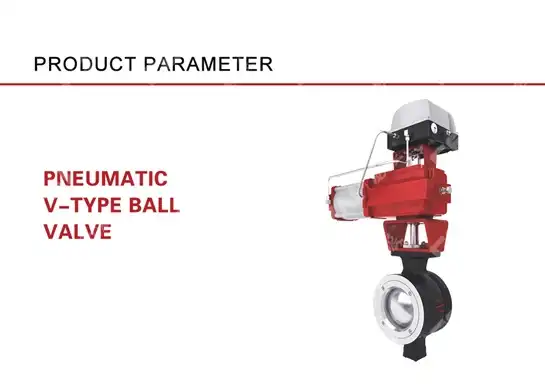Understanding the Key Components of an Electric Ball Valve Actuator
Picture this scenario: You're in the middle of a critical industrial process when suddenly your flow control system fails, causing expensive downtime and potential safety hazards. The culprit? A poorly understood Electric Ball Valve actuator system that wasn't properly maintained or selected. Understanding the key components of an Electric Ball Valve actuator isn't just technical knowledge—it's essential for preventing costly failures, ensuring optimal performance, and maintaining system reliability. This comprehensive guide will demystify each critical component, empowering you to make informed decisions about Electric Ball Valve selection, maintenance, and troubleshooting.
Electric Motor: The Heart of Electric Ball Valve Systems
The electric motor serves as the foundational power source for any Electric Ball Valve actuator system, converting electrical energy into the mechanical torque required to rotate the valve stem and position the ball within the valve body. Modern Electric Ball Valve motors are engineered with sophisticated design considerations that directly impact performance, reliability, and operational efficiency across diverse industrial applications.
-
Motor Types and Configurations
Electric Ball Valve actuators typically employ either AC or DC motors, each offering distinct advantages depending on the specific application requirements. AC motors are predominantly used in stationary installations where consistent power supply is available, providing reliable performance with minimal maintenance requirements. These motors deliver consistent torque characteristics that make them ideal for Electric Ball Valve applications requiring precise positioning and repeatable operation. DC motors, conversely, offer superior speed control and are often preferred in applications where variable speed operation or battery backup systems are essential for Electric Ball Valve functionality. The motor housing design incorporates weatherproof enclosures that protect internal components from environmental factors such as moisture, dust, and corrosive atmospheres commonly encountered in industrial settings. Advanced motor designs feature temperature monitoring systems and thermal protection circuits that prevent overheating damage while ensuring consistent Electric Ball Valve operation under varying load conditions. Motor sizing calculations must account for the required torque to overcome valve friction, packing resistance, and line pressure differentials that could impede proper Electric Ball Valve operation.
-
Power Transmission and Torque Characteristics

The relationship between motor power output and valve torque requirements represents a critical design consideration for Electric Ball Valve actuators. Motors must generate sufficient starting torque to initiate valve movement from static positions while maintaining adequate running torque throughout the entire stroke range. Torque multiplication occurs through integrated gear reduction systems that amplify the motor's rotational force to levels suitable for Electric Ball Valve operation under high-pressure conditions. Variable frequency drives and soft-start circuits are increasingly integrated into Electric Ball Valve motor systems to provide smooth acceleration and deceleration profiles that minimize mechanical stress on valve components. These advanced control features extend equipment lifespan while improving overall system reliability. Motor feedback systems, including encoders and resolvers, provide precise position information that enables closed-loop control strategies for Enhanced Electric Ball Valve positioning accuracy.
Gear Reduction Systems: Amplifying Control Precision
Gear reduction assemblies within Electric Ball Valve actuators serve the critical function of converting high-speed, low-torque motor output into the low-speed, high-torque characteristics required for reliable valve operation. These precisely engineered mechanical systems enable Electric Ball Valve actuators to generate the substantial forces necessary to overcome packing friction, seat compression, and line pressure differentials while maintaining the fine control resolution required for accurate flow regulation.
-
Gear Train Design and Materials
Modern Electric Ball Valve gear reduction systems incorporate helical and planetary gear configurations that provide superior load distribution and reduced backlash compared to traditional spur gear arrangements. Helical gears offer quieter operation and improved load-carrying capacity, making them ideal for Electric Ball Valve applications requiring frequent cycling or continuous modulating service. Planetary gear sets provide compact packaging with high reduction ratios, enabling manufacturers to design more space-efficient Electric Ball Valve actuator assemblies without compromising performance. Gear materials selection involves careful consideration of wear resistance, corrosion protection, and temperature stability requirements specific to Electric Ball Valve service conditions. Premium actuators utilize case-hardened steel gears with specialized surface treatments that extend operational life while maintaining precise positioning accuracy. Lubrication systems employ high-performance synthetic lubricants that maintain consistent viscosity across wide temperature ranges, ensuring reliable Electric Ball Valve operation in demanding environmental conditions.
-
Backlash Compensation and Positioning Accuracy
Backlash management represents a crucial design consideration for Electric Ball Valve actuators, particularly in applications requiring precise flow control or tight shut-off capabilities. Advanced gear reduction systems incorporate anti-backlash mechanisms such as spring-loaded gear pairs or split-gear configurations that eliminate mechanical play between mating components. This design approach ensures that Electric Ball Valve positioning commands translate directly into valve movement without the delays or inaccuracies associated with gear train backlash. Precision manufacturing tolerances and assembly procedures minimize accumulated backlash throughout the gear train, enabling Electric Ball Valve actuators to achieve positioning accuracies typically within ±1% of full scale. Integrated position feedback systems continuously monitor actual valve position relative to commanded position, enabling closed-loop control algorithms to compensate for any remaining mechanical irregularities and maintain optimal Electric Ball Valve performance characteristics.
Control Electronics and Position Feedback Systems
The electronic control system represents the intelligence center of modern Electric Ball Valve actuators, integrating sophisticated microprocessor-based controllers with advanced communication capabilities and comprehensive diagnostic features. These systems enable precise valve positioning control while providing extensive monitoring and reporting capabilities that support predictive maintenance strategies and optimize overall Electric Ball Valve system performance.
-
Microprocessor-Based Control Architecture
Contemporary Electric Ball Valve actuators employ powerful microprocessor platforms that execute complex control algorithms capable of adapting to varying process conditions and operational requirements. These intelligent control systems continuously monitor multiple input parameters including position feedback, motor current, supply voltage, and ambient temperature to optimize Electric Ball Valve performance while protecting against potentially damaging operating conditions. Advanced control algorithms incorporate adaptive learning capabilities that automatically adjust control parameters based on valve and process characteristics, eliminating the need for extensive manual tuning procedures. PID control loops with auto-tuning capabilities ensure optimal Electric Ball Valve response characteristics while minimizing overshoot and settling time. Programmable logic functions enable users to implement custom control strategies tailored to specific application requirements, enhancing overall system flexibility and performance.
-
Communication Protocols and Network Integration
Modern Electric Ball Valve actuators support multiple industrial communication protocols including Modbus, Foundation Fieldbus, HART, and Ethernet-based networks that enable seamless integration with distributed control systems and SCADA platforms. These communication capabilities provide real-time access to valve position, diagnostic information, and operational parameters while enabling remote configuration and control functionality. Digital communication systems eliminate the signal degradation and interference issues associated with traditional analog control methods, ensuring reliable Electric Ball Valve operation even in electrically noisy industrial environments. Advanced diagnostic capabilities continuously monitor actuator health parameters and provide early warning of potential maintenance requirements, supporting condition-based maintenance strategies that minimize unplanned downtime while maximizing equipment reliability.
Limit Switches and Position Monitoring
Position monitoring systems within Electric Ball Valve actuators serve multiple critical functions including end-of-travel protection, position indication, and safety interlocking capabilities. These systems ensure that valve operation remains within safe operating parameters while providing accurate position feedback to control systems and operators.
-
Mechanical and Electronic Switch Technologies
Traditional Electric Ball Valve actuators employ mechanical limit switches that provide reliable end-of-travel indication through direct contact with actuator drive mechanisms. These robust switching devices offer excellent reliability in harsh industrial environments while providing clear visual indication of valve position status. Modern mechanical switches incorporate sealed contact arrangements and corrosion-resistant materials that ensure long-term reliability in challenging Electric Ball Valve applications. Electronic position sensors including potentiometers, encoders, and Hall effect devices provide continuous position feedback with superior accuracy and resolution compared to traditional mechanical switches. These advanced sensing technologies enable Electric Ball Valve actuators to achieve precise intermediate positioning capabilities while providing detailed diagnostic information about valve operation characteristics. Non-contact sensing technologies eliminate mechanical wear issues while providing maintenance-free operation throughout extended service intervals.
-
Position Indication and Alarm Systems
Integrated position indication systems provide local and remote indication of Electric Ball Valve position status through multiple technologies including mechanical position indicators, LED status displays, and digital communication protocols. Visual position indicators enable operators to quickly assess valve status during routine inspections while digital displays provide detailed position information and diagnostic data. Alarm and interlock systems continuously monitor Electric Ball Valve position and operational parameters to detect abnormal conditions that could compromise safety or process performance. Configurable alarm setpoints enable users to establish custom monitoring parameters appropriate for specific application requirements while comprehensive logging capabilities maintain historical records of valve operation and alarm conditions for analysis and troubleshooting purposes.
Power Supply and Wiring Systems
Electrical power distribution and wiring systems represent critical infrastructure components that directly impact Electric Ball Valve actuator performance, reliability, and safety. Proper design and installation of these systems ensure consistent power delivery while providing protection against electrical hazards and environmental factors that could compromise system operation.

-
Power Supply Design Considerations
Electric Ball Valve actuators require carefully designed power supply systems that provide stable voltage and current delivery throughout varying load conditions and environmental factors. Power supply specifications must account for motor starting currents, control system requirements, and auxiliary device power consumption to ensure adequate capacity margins for reliable operation. Voltage regulation systems maintain consistent power delivery despite variations in utility supply characteristics, ensuring optimal Electric Ball Valve performance under all operating conditions. Uninterruptible power supply systems and battery backup capabilities enable Electric Ball Valve actuators to complete critical operations during power outages, preventing potential safety hazards or process disruptions. Emergency power systems incorporate automatic transfer switching and battery monitoring systems that ensure reliable backup power availability when required. Advanced power management features optimize energy consumption while maintaining full Electric Ball Valve functionality.
-
Cable Selection and Installation Practices
Proper cable selection for Electric Ball Valve installations involves consideration of current-carrying capacity, voltage rating, temperature resistance, and environmental protection requirements. Motor power cables must be sized to handle starting current surges while maintaining acceptable voltage drop characteristics throughout cable runs. Control and communication cables require appropriate shielding and separation from power circuits to prevent electromagnetic interference that could disrupt Electric Ball Valve control signals. Cable installation practices incorporate proper routing, support, and protection methods that ensure long-term reliability while facilitating maintenance access. Conduit systems and cable tray arrangements provide mechanical protection while enabling future cable modifications or additions. Grounding and bonding systems ensure electrical safety while minimizing the potential for electrical noise interference that could affect Electric Ball Valve operation.
Conclusion
Understanding the key components of an Electric Ball Valve actuator system is essential for successful valve selection, installation, and maintenance practices. Each component from the electric motor through the control electronics plays a vital role in ensuring reliable, precise, and safe valve operation across diverse industrial applications.
Cooperate with CEPAI Group Co., LTD.
CEPAI Group Co., LTD. stands as a leading technology multinational company specializing in high-precision Electric Ball Valve manufacturing and intelligent automation solutions. Established in January 2009 with a registered capital of 200 million yuan, our company operates from a state-of-the-art 56,000 square meter facility located at 333 Jianshe West Road, Jinhu Economic Development Zone, Jiangsu Province. As a national high-tech enterprise and specialized new small giant enterprise, CEPAI has earned recognition as a Jiangsu Smart Factory and Internet benchmarking Factory, receiving the prestigious Mayor Quality Award in 2022.
Our comprehensive Electric Ball Valve product portfolio encompasses wellhead devices, pipeline valves, regulating valves, and precision instruments designed for oil and gas drilling and production applications. Through continuous innovation and investment in advanced manufacturing technologies, CEPAI has invested 156 million yuan in intelligent transformation and upgrading, establishing the longest high-precision intelligent manufacturing flexible production line in the Asia Pacific region. Our commitment to quality excellence is demonstrated through extensive certifications including API Q1, API 6A, API 6D, API 16C, ISO 9001, ISO 14001, and CE marking, ensuring that every Electric Ball Valve meets the highest international standards.
CEPAI's competitive advantages extend beyond manufacturing excellence to encompass comprehensive pre-sales technical consultation, customized solution services, and extensive after-sales support. Our qualified supplier status with major industry leaders including PetroChina, Sinopec, and CNOOC, along with partnerships with China Datang Group, Baowu Group, and other prominent organizations, demonstrates our capability to deliver reliable Electric Ball Valve solutions for the most demanding applications.
Ready to experience the superior quality and performance of CEPAI Electric Ball Valve solutions? As a leading China Electric Ball Valve factory, China Electric Ball Valve supplier, and trusted China Electric Ball Valve manufacturer, we offer competitive China Electric Ball Valve wholesale pricing with Electric Ball Valve for sale options tailored to your specific requirements. Contact our technical experts today to discuss your Electric Ball Valve price requirements and discover why industry professionals choose High Quality Electric Ball Valve solutions from CEPAI. Save this comprehensive guide for future reference, and don't hesitate to reach out whenever you need expert guidance on Electric Ball Valve selection or application. Email us at cepai@cepai.com to start your partnership with CEPAI Group Co., LTD. today.
FAQ
Q: What is the typical lifespan of an electric actuator motor in ball valve applications?
A: Electric Ball Valve actuator motors typically last 10-15 years with proper maintenance, depending on operating cycles and environmental conditions.
Q: How do you determine the correct torque requirements for an Electric Ball Valve actuator?
A: Torque requirements depend on valve size, pressure rating, and service conditions. Calculate based on break-away torque plus a 25-50% safety margin.
Q: What maintenance is required for Electric Ball Valve actuator gear systems?
A: Regular lubrication every 2-3 years, periodic backlash inspection, and gear wear assessment during scheduled maintenance intervals.
Q: Can Electric Ball Valve actuators operate in hazardous classified areas?
A: Yes, when properly certified with explosion-proof enclosures meeting ATEX, IECEx, or similar hazardous area classification standards.
References
1. "Industrial Valve Actuator Technology and Applications" by Smith, J.R. and Anderson, K.L., McGraw-Hill Professional, 2023
2. "Electric Actuator Design Principles for Process Control" by Thompson, M.D., Butterworth-Heinemann, 2022
3. "Valve Selection and Specification Guide" by Wilson, P.H., Industrial Press, 2023
4. "Automation and Control Systems for Industrial Valves" by Rodriguez, A.M. and Chen, L.K., CRC Press, 2022
_1746598568348.webp)
Get professional pre-sales technical consultation and valve selection services, customized solution services.

About CEPAI


